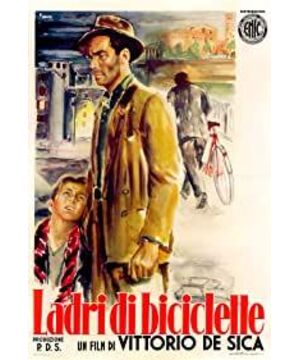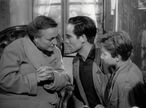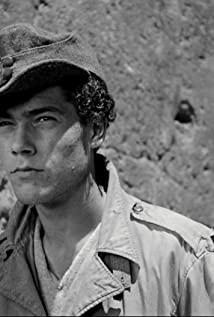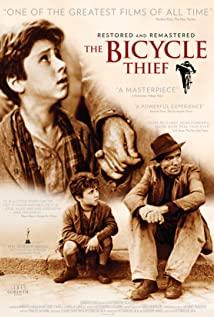Film review: Xia Yixu - In "The Bicycle Stealer", the context of the intensified social contradictions under realism expresses that after World War II, Rome fell into the abyss of intensified social contradictions. The film is suspended in a context in which all kinds of waste are prosperous and all kinds of jobs are waiting to be done, eliminating the narrative plot of the virtual story. Against the background of objective and real events, it witnesses the story of the owner, Kiki, who gradually fell into the abyss of people's hearts when he was looking for a bicycle. The director accurately captured the intensification of contradictions in a decaying society after World War II. Under the resonance of the film's virtual reality, the image space constructed is the director's reflection and cognition on the reconstruction of the country and the recluse of human nature. The camera focuses on the real life in Italy after World War II, expressing people's simple and sincere emotions and living conditions on the screen and constructing it on the screen, alluding to a real sense of poverty, unemployment, and crime. Intensified social contradictions. image world. Referring to the films of the Italian Neorealism period, the director replaced the virtual storyline with real daily life events, allowing the audience to form a psychological emotion and chorus of staring. At the beginning of the film, the director sets up a horizontal and vertical long-lens scene scheduling, which insinuates the fierce competition of class contradictions in a withered society on the screen, and conceives the scene context of unprecedented social load from an objective and neutral perspective. The fixed shot is also a highlight of the film. The scene when the father and son take shelter from the rain, the raindrops wet the father and son, the dark crowd and the group of bicycles coming and going on the street suppress them in the darkness. Under the reflection, the loneliness and helplessness of the characters are reflected, which makes the audience feel sad. It can be seen that the social background at that time, the male protagonist, under the intensification of social contradictions, finds hope in life from the cracks of social contradictions. The film omits the "formula" and "star system" modes of Hollywood movies, and abandons the old-fashioned creative concept of high-profile narrative and tear-jerking sensationalism. With an objective and independent creative situation, it reflects the decline of people's moral values in the decaying society after World War II. with malaise. Comparing the films of the Hollywood period, it is not difficult to find that the films always show more real emotions, rather than simply narrating for the sake of narration, drama for the sake of drama, and conflict for the sake of conflict. Narratively, the film removes the limitations of the script on the format of the film. The director's shaping of the characters is even more objective and three-dimensional in shaping the group portraits of marginal characters in the withered society at the same time. In a scene when Richie identified a thief, he used a fixed long shot to dilute the dramatic conflict, and let the framed composition of the picture inside the frame create an objective attention effect, bringing the neorealism to the scene. Aesthetics are brought to the extreme. Because of the helplessness, despair and confusion in his heart, Richie, who did not believe in the theory of ghosts, put down his bottom line and went to the goddess, which inevitably has a hint of irony in this stroke. The whole film has formed a unique documentary aesthetic style. When the father and child are looking for a suspect, they use a fixed long shot to describe the character's physical reaction when looking for a suspect, forming an aesthetic style with high realism. All in all, the film is mostly set with objective fixed long shots, which shaped the social style and human group portrait at that time. What makes people amazed is that the director uses ordinary people as actors, which makes the film more realistic and natural. In the narrative process, he analyzes this bleak society more naturally and objectively. Under the influence of World War II, the director hides lost human beings, withered societies and degenerate countries in the film, deeply reflecting on the destruction of the people by the war and the chaotic situation fatal to national politics. In the film, there is always a depressing and dull atmosphere. The music carries through the development of the entire storyline, making it patchwork, one after another, and a distinct sense of paragraphs. In the scene of the father and son eating in the restaurant, the director did not deliberately depict that they could not integrate into this stagnant society with distinct classes, but cleverly used a contrast montage to describe Bruno's dilemma when he was eating bread and the life of a little girl from a rich family. The way of eating forms a sharp contrast, hiding the gap and reality under the class struggle. Richie's dilemma in the presence of self-esteem reflects the confusion, hesitation and inner contradictions in people's hearts. In fact, the director wants to try his best to show the intensification of contradictions among various classes in a desolate society. At the end of the film, the father and son walked into the vast crowd holding hands and gradually disappeared from the audience's sight. This actually eliminated the guilt in the father's heart, and truly portrayed the characters' helplessness, numbness, and helplessness. It hides the soul of the audience, hides the hearts of the characters, and hides the current state of society that is withered and ruined. The fall of the country, the complexity of people's hearts, the confusion of people's hearts...Let the audience think to themselves, can't help but feel outrageous, and deeply reflect on the destruction of the country, society and individuals by war. The devastation caused by war is not only the superficial phenomenon of the signifier, but also the inner meaning that the film refers to. The film perfectly interprets the essence of the Italian Neorealism movement, with a high degree of authenticity and objectivity, cruelly showing the intensification of contradictions in the post-war Roman society. Although the reality is cruel, people should also separate the contradictions in the society and look for the brilliance of human nature and the true feelings in the world in the cracks. To a certain extent, the film reconciled the contradictions in the withered society at that time, filled the emptiness and helplessness of people's hearts, injected new vitality into the dead society, and also made great achievements in the history of Italian neorealist film. The film perfectly interprets the essence of the Italian Neorealism movement, with a high degree of authenticity and objectivity, cruelly showing the intensification of contradictions in the post-war Roman society. Although the reality is cruel, people should also separate the contradictions in the society and look for the brilliance of human nature and the true feelings in the world in the cracks. To a certain extent, the film reconciled the contradictions in the withered society at that time, filled the emptiness and helplessness of people's hearts, injected new vitality into the dead society, and also made great achievements in the history of Italian neorealist film. The film perfectly interprets the essence of the Italian Neorealism movement, with a high degree of authenticity and objectivity, cruelly showing the intensification of contradictions in the post-war Roman society. Although the reality is cruel, people should also separate the contradictions in the society and look for the brilliance of human nature and the true feelings in the world in the cracks. To a certain extent, the film reconciled the contradictions in the withered society at that time, filled the emptiness and helplessness of people's hearts, injected new vitality into the dead society, and also made great achievements in the history of Italian neorealist film.
View more about Bicycle Thieves reviews











